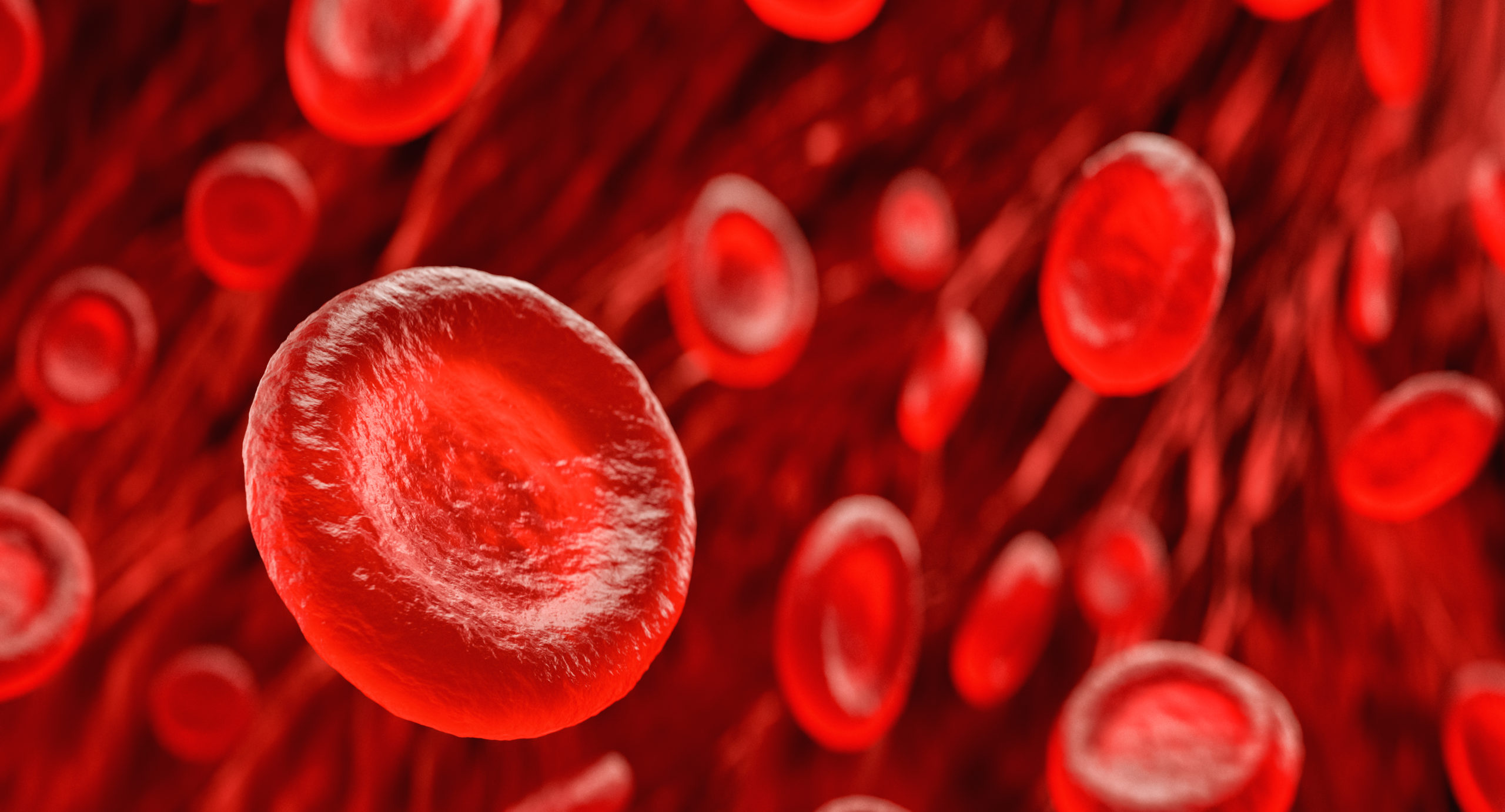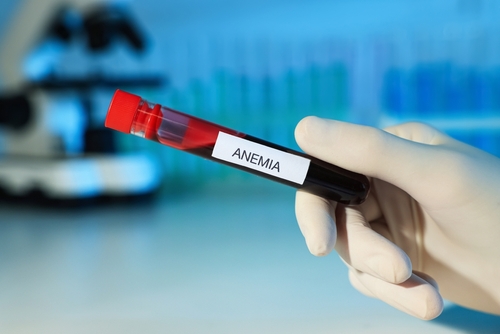
Anemia related to chronic kidney disease (CKD) is associated with reduced quality of life, more frequent blood transfusions, and increased risk of cardiovascular events. Results of previous trials among patients with CKD have raised safety concerns regarding the use of conventional erythropoiesis-stimulating agents (ESAs) for the treatment of anemia. When treatment is targeted a normal hemoglobin (Hb) level (13.0 to 14.0 g/dL), potential risks associated with the use of recombinant human erythropoietin and its derivatives include increases in the risk of stroke, myocardial infarction, vascular access thrombosis, tumor progression, or death.
Results of more recent trials have suggested that hypoxia-inducible factor (HIF) prolyl hydroxylase inhibitors (PHIs) are as effective as ESAs in increasing levels of Hb. Ajay K. Singh, MBBS, FRCP, MBA, and colleagues reported results of the ASCEND-D (Anemia Studies in Chronic Kidney Disease: Erythropoiesis via a Novel Prolyl Hydroxylase Inhibitor Daprodustat–Dialysis) and the ASCEND-ND (Anemia Studies in Chronic Kidney Disease: Erythropoiesis via a Novel Prolyl Hydroxylase Inhibitor Daprodustat—non-Dialysis) trials [New England Journal of Medicine; doi:10.1056/NEJMoa2113379 and doi:10.1056/NEJMoa2113380].
ASCEND-D: Daprodustat in Patients Receiving Dialysis
ASCEND-D was a randomized, open-label, phase 3 trial among patients who were undergoing maintenance dialysis, including patients with ESA hyporesponsiveness. The researchers sought to examine the hematologic efficacy, cardiovascular safety, and iron kinetics of the oral HIF-PHI daprodustat compared with conventional therapy with ESAs.
Eligible patients were adults with CKD who were undergoing dialysis and had a Hb level of 8.0 to 11.6 g/dL. Patients were required to have a serum ferritin level of >100 ng/mL and a transferrin saturation above 20%. Exclusion criteria included anemia unrelated to CKD, recent cardiovascular event, or current or recent cancer.
The trial consisted of four periods: screening, placebo run-in, treatment, and follow-up. Patients were evaluated at least every 4 weeks during the first year of the trial and at least every 12 weeks thereafter. Patients were randomized in a 1:1 ratio to receive either oral daprodustat or an injectable ESA (epoetin alfa if they were receiving hemodialysis or darbepoetin alfa if they were receiving peritoneal dialysis). The primary outcomes were the mean change in the Hb level from baseline to weeks 28 through 52 (noninferiority margin, –0.75 g/dL) and the first occurrence of a major cardiovascular event (MACE), defined as a composite of death from any cause, nonfatal myocardial infarction, or nonfatal stroke (noninferiority margin, 1.25).
A total of 2964 patients underwent screening at 431 centers in 35 countries from November 23, 2016, through August 10, 2018. At baseline, the two trial groups (daprodustat, n=1487 and ESA, n=1477) were well balanced in demographic and clinical characteristics, including history of cardiovascular disease, previous ESA dose, and use of intravenous iron. Of the total cohort, 88.5% were undergoing hemodialysis and 12.2% were considered to have ESA hyporesponsiveness on the basis of ESA-resistance index or receipt of an epoetin dose of at least 450 U per kilogram of body weight per week. Mean baseline Hb level was 10.4 g/dL across the two groups.
In the daprodustat group, the mean change in Hb level from baseline to weeks 28 through 52 was 0.28 g/dL, compared with 0.10 g/dL in the ESA group, for a difference of 0.18 g/dL (95% confidence interval [CI], 0.12-0.24), meeting the prespecified noninferiority margin for daprodustat. Results of supplementary analysis provided findings that were consistent with the primary analysis. The effect of daprodustat compared with ESA therapy was generally consistent across prespecified subgroups.
In the daprodustat group a first MACE occurred in 25.2% of patients (n=374/1487), compared with 26.7% of patients (n=394/1477) in the ESA group (hazard ratio [HR]; 0.93; 95% CI, 0.81-1.07), meeting the prespecified noninferiority margin of 1.25. In general, treatment effect was consistent across prespecified subgroups, and the results were consistent with other supplementary intention-to-treat and on-treatment analyses.
Results of superiority testing for daprodustat compared with ESA were not significant regarding the three cardiovascular principal secondary outcomes: the first occurrence of MACE (HR, 0.93; 95% CI, 0.81-1.07), the first occurrence of MACE or a thromboembolic event (HR, 0.88; 95% CI, 0.78-1.00), and the first occurrence of MACE or hospitalization for heart failure (HR, 0.97; 95% CI, 0.85-1.11). The incidence of death from any cause was similar in the two groups.
A total of eight patients (five in the daprodustat group and three in the ESA group) were excluded from the safety analyses because they did not receive the randomized treatment. The percentages of patients with serious adverse events were similar between the two groups (52.2% in the daprodustat group vs 50.7% in the ESA group).
The researchers cited some limitations to the findings, including the open-label design, the possibility that the observation time for the trial was insufficient to characterize the full risks, and the use of epoetin alfa as the comparator, possibly limiting the generalizability of the conclusions regarding the noninferiority of daprodustat to other ESAs.
In summary, the authors said, “In this trial, we found that daprodustat was noninferior to conventional ESAs in the treatment of anemia among patients with CKD who were undergoing dialysis and in the incidence of cardiovascular outcomes.”
ASCEND-ND: Daprodustat in Patients Not Receiving Dialysis
ASCEND-ND was a randomized, open-label, phase 3 trial with blinded adjudication of cardiovascular outcomes among patients with CKD not undergoing dialysis comparing daprodustat with darbepoetin alfa for the treatment of anemia. The primary outcomes were the mean change in hemoglobin level from baseline to weeks 28 through 52 and the first occurrence of a major adverse cardiovascular event (MACE), defined as a composite of death from any cause, nonfatal myocardial infarction, or nonfatal stroke.
Adult patients were eligible for the trial if they had CKD stage 3 to 5 and were not currently receiving dialysis or scheduled to initiate dialysis within 90 days, met hemoglobin and ESA criteria, and had a serum ferritin level of >100 ng/mL and a transferrin saturation above 20%. Exclusion criteria were anemia not associated with CKD, a recent cardiovascular event, or current or recent cancer.
The trial had four periods: screening, placebo run-in, treatment, and follow-up. Eligible patients were randomized in a 1:1 ratio to receive either oral daprodustat or subcutaneous darbepoetin alfa.
A total of 3872 patients were randomized to receive daprodustat (n=1937) or darbepoetin alfa (n=1935) at 506 centers in 39 countries; randomization occurred from December 5, 2016, through December 7, 2020. At baseline, the two groups (daprodustat, n=1937; darbepoetin alfa, n=1935) were well balanced in demographic and clinical characteristics, including estimated glomerular filtration rate, coexisting conditions, history of cardiovascular disease, and previous ESA does in those who had received an ESA. Mean baseline Hb level was 9.9 g/dL across the two groups.
In the daprodustat group, mean change in Hb level from baseline to weeks 28 through 52 was 0.74 g/dL, compared with 0.66 g/dL in the darbepoetin alfa group; difference 0.08 g/dL (95% CI, 0.03-0.13), meeting the prespecified noninferiority margin. Findings in supplementary analyses were consistent with those in the primary analysis. In general, the effect of daprodustat compared with darbepoetin alfa was consistent across the prespecified subgroups.
A rapid increase in Hb level was defined as an increase of >2 g/dL during any 4-week period from randomization through the first year, and was observed in ≤2% of patients in both trial groups. Adherence to the trial regimen was 97% of patients in the daprodustat group and 98% in the darbepoetin alfa group.
In the daprodustat group, a first MACE occurred in 19.5% of patients (n=378/1937) compared with a first MACE in 19.2% (n=371/1935) in the darbepoetin alfa group (HR, 1.03; 95% CI, 0.89-1.19), meeting the prespecified noninferiority margin of 1.25. Analysis in prespecified subgroups yielded generally consistent results. The results were also consistent with those in other supplementary intention-to-treat analyses. The on-treatment MACE analysis that censored data on patients at 28 days following the date of the last dose, revealed a higher incidence of a first MACE during the treatment period in the daprodustat group compared with the darbepoetin alfa group (14.1% vs 10.5%, respectively, HR, 1.40; 95% CI, 1.17-1.68).
Results of superiority testing were not significant for the four principal secondary outcomes: the first occurrence of MACE in the daprodustat group as compared with the darbepoetin alfa group (HR, 1.03; 95% CI, 0.89-1.19), MACE or thromboembolic events (HR, 1.06; 95% CI, 0.93-1.22), MACE or hospitalization for heart failure (HR, 1.09; 95% CI, 0.95-1.24), and progression of CKD (subdistribution HR, 0.98; 95% CI, 0.84-1.13). The incidence of death from any cause was similar in the two groups.
Two patients in the darbepoetin group were excluded from the safety analyses because they did not receive the assigned treatment. Serious adverse events that started or worsened after initiation of trial treatment were reported in 43.9% of patients (n=850/1937) in the daprodustat group and 36.4% of patients (n=703/1933) in the darbepoetin alfa group. There was no notable excess of any event in the daprodustat group relative to the darbepoetin alfa group.
The open-label design of the study and patient awareness of treatment assignment were cited as limitations to the study findings, Other limitations included the possible insufficiency of the observation time for the trial, the use of darbepoetin alfa possibly limiting generalizability of the conclusions regarding noninferiority to other ESAs, and not taking into account the different dosing frequencies.
In summary, the researchers said, “In this trial, we found that daprodustat was noninferior to darbepoetin alfa, both in the treatment of anemia in patients with CKD who were not undergoing dialysis and with respect to cardiovascular outcomes. This trial showed that
Both trials were supported by GlaxoSmith Kline.







 © 2025 Mashup Media, LLC, a Formedics Property. All Rights Reserved.
© 2025 Mashup Media, LLC, a Formedics Property. All Rights Reserved.